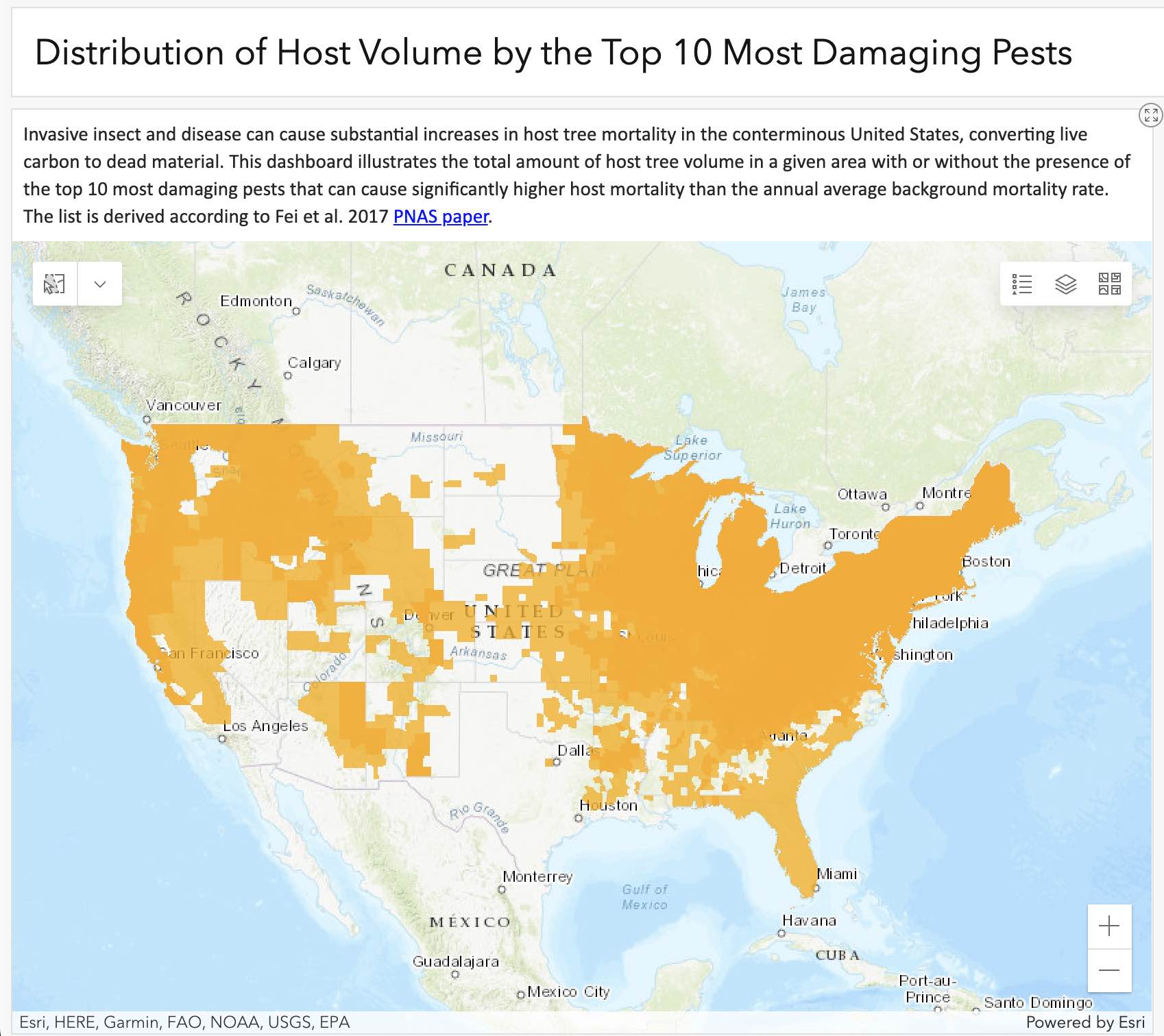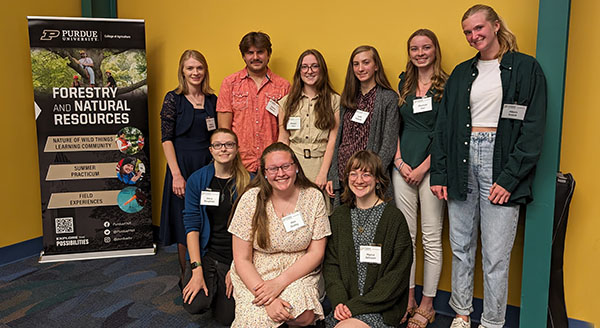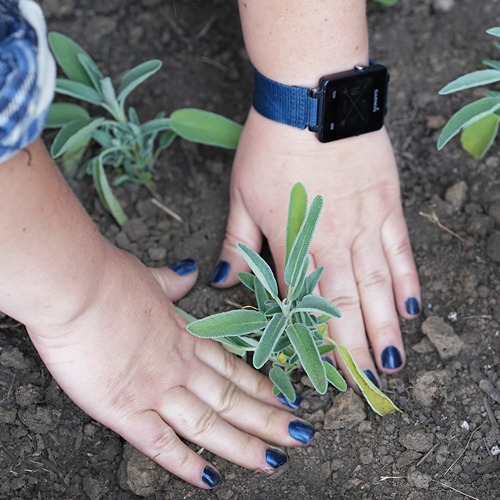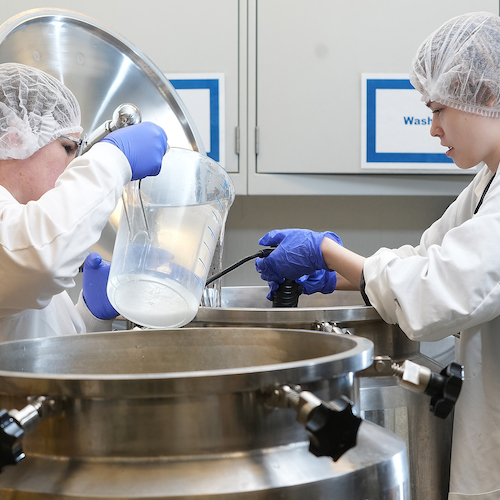Purdue University and the U.S. Forest Service today announced the new and improved Alien Forest Pest Explorer interactive web tool.
The user-friendly dashboard combines information from multiple sources to show the impact of different forest insects and diseases, and the potential for further damage. The interactive and customizable dashboards are the first to overlay this pest data with related data about the status and health of the host tree species in the forest, said Songlin Fei, the Dean’s Remote Sensing Chair and professor of forestry and natural resources in Purdue’s College of Agriculture who led the project.
“We want to better understand the relationship between pests and tree hosts, as well as assess the vulnerability of our forests, so that we can make the best decisions to preserve and protect them,” said Fei who leads Purdue’s Digital Forestry Initiative. “This was designed for everyone, not only for the professionals. Pest and disease prevention begins in your backyard. We want to put this tool in the hands of anyone who cares for trees, so they understand what pests they may face, how to identify them and how to protect their trees and forests.”
Fei collaborated with Nicole Kong, associate professor of geographic information systems at Purdue, to organize the data, design and develop the tool, which Purdue hosts.
“With the COVID pandemic, we all became much more accustomed to using dashboards and realized the empowerment of being able to easily find information and trends specific to our area,” said Kong, who also is a part of Purdue’s Digital Forestry Initiative and associate dean for research in Purdue’s Libraries and School of Information Studies. “One can think of this as like a COVID dashboard for forest health and pest outbreaks. We worked to visualize the data in the most useful and intuitive way.”
The Alien Forest Pest Explorer, or AFPE, offers maps of pest species distributions; the growth, mortality and removal rates of host species; as well as trends in host abundance and information about the pests. The annually updated data has resolution to the county level.
 The Alien Forest Pest Explorer interactive web tool combines information from multiple sources to show the impact of different forest insects and diseases. This dashboard shows the impact of the top 10 most damaging pests across the U.S.
The Alien Forest Pest Explorer interactive web tool combines information from multiple sources to show the impact of different forest insects and diseases. This dashboard shows the impact of the top 10 most damaging pests across the U.S.
The dashboard and its database of information are critical to forest health protection, said Tracy Tophooven, the Acting Station Director of the U.S. Department of Agriculture Forest Service Northern Research Station.
“In the past few centuries, hundreds of invasive insects have been introduced to the United States through a variety of means,” Tophooven said. “This tool integrates the Northern Research Station’s critical invasive species research with forest inventory and analysis data to enable users to view county-level data to meet local challenges posed by invasive insects.”
Experts from the USDA Forest Service, including Randall Morin, research forester, Andrew Liebhold, research entomologist, and Susan Crocker, research forester, collaborated on the project.
Information featured in the dashboard includes data from the team’s research into the 16 most damaging pest species and a paper Fei co-authored with Morin and Liebhold, published in the Proceedings of the National Academy of Sciences, as well as data from the Forest Service’s Forest Inventory and Analysis Program Database.
“The AFPE integrates two critical data sets and makes them available online with custom mapping options,” Morin said. “A user can quickly get information about the range of invasive forest pests and their hosts in the forests of the United States. Prior to the AFPE, this type of information required accessing and downloading multiple datasets and having to knowledge and tools to combine them correctly.”
The AFPE tool is dynamic and customizable. An overview video is available here.
“One can zoom in or out and even draw an outline around their area of interest and only see information from within that boundary,” said Kong. “In addition, users can search by pest, for example the emerald ash borer, to see where it is across the U.S., how much forest volume has been lost since it arrived in an area or the volume of host trees in a vulnerable area not yet infested.”
One telling piece of information the tool illustrates is forest mortality, Fei said.
“Our forests are critical to environmental health,” he said. “Our forests are a huge carbon sink for emissions, but, when a tree dies, that carbon is released. Some of the most damaging pest species are killing off trees at a rate equivalent to putting millions of more cars on the street annually, in terms of carbon emissions. We need to track this and pay attention to how things are trending. It is much cheaper and easier to maintain a forest than to try to rebuild one.”
The Alien Forest Pest Explorer database is maintained by Purdue, the U.S. Forest Service Northern Research Station, the U.S. Forest Service Forest Health Protection and the Forest Health Assessment and Applied Sciences team. The project also receives partial funding from the National Science Foundation.
Purdue’s College of Agriculture and the Forest Service have a history of successful collaboration, including a joint national level invasive plant project and a national level forest biomass and carbon project.





